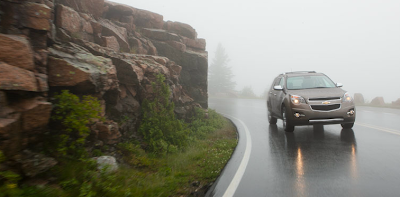Rain is essential. It helps vegetation flourish, provides
nutrients to soil, and is an overall integral part of life here on Earth. But when it’s hitting your windshield and the
pitter-patter of raindrops causes you to clench your teeth, it’s time to take
precaution. Rain can be attributed to
thousands of car accidents a year.
Accidents can be preventable by drivers who weather (pun intended) the
conditions of the road, using their intuition and defensive driving skills to
stay safe during their commute. When the
road is wet, a film is created on the asphalt, causing your tires to lose
traction. Another problem during a
downpour is your perception. You can’t
see as far into the distance as normal, so this decreases visibility of other
cars and the road itself.
In today’s blog, we discuss some options
to driving safely when the roads are wet.
Be careful when it rains after a dry
spell. Engine and oil grease cake up on
asphalt over time. When this is mixed
with rainwater, it can cause the road to be extremely slick.
Allot more time for your commute. This allows for a steady drive to your
destination. The last thing you want to
do is rush, it also compensates for delays, flooding, and unexpected accidents.
No Cruise control! If you go into a hydroplane, there’s a slight
chance your car could accelerate.
Reaction time is crucial and you’ll need your foot close to the pedal at
all times.
Turn on your headlights. This helps you see the road, and also lets
motorists see you. Blasting your high
beams however can prove detrimental. It
can obscure your view further, reflecting water droplets in the air.
Hydroplaning. The first rule to avoiding the dreaded
hydroplane is to avoid braking suddenly or turning the wheel, which can cause
your car to spin or skid off of the road.
According to Edmunds: “Release the gas pedal slowly and
steer straight until the car regains traction. If you must brake, tap the brake
pedal (unless you have antilock brakes, in which case you can put your foot
down).”
Defog your windows. Rain causes your windshield to fog up fairly
quickly. Turn on your defrosters and
make sure you're A/C is turned on. Most
vehicles climate control systems will automatically engage the A/C when the
windshields defrost is selected.

No comments:
Post a Comment